Kathy and I took an 11-day road trip to various places including Nevada and Arizona. Rather than offer the usual dull day-by-day sequence of non-events, I’ll simply present random interesting experiences in no temporal order.
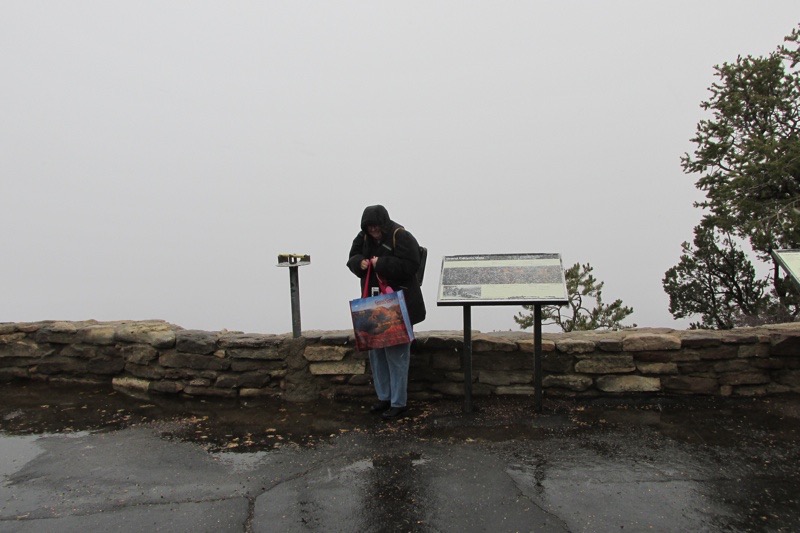
We visited the Grand Canyon. The weather was inhospitable. Here’s Kathy basking in the glory of the spectacular view of the Grand Canyon afforded by the snowstorm.
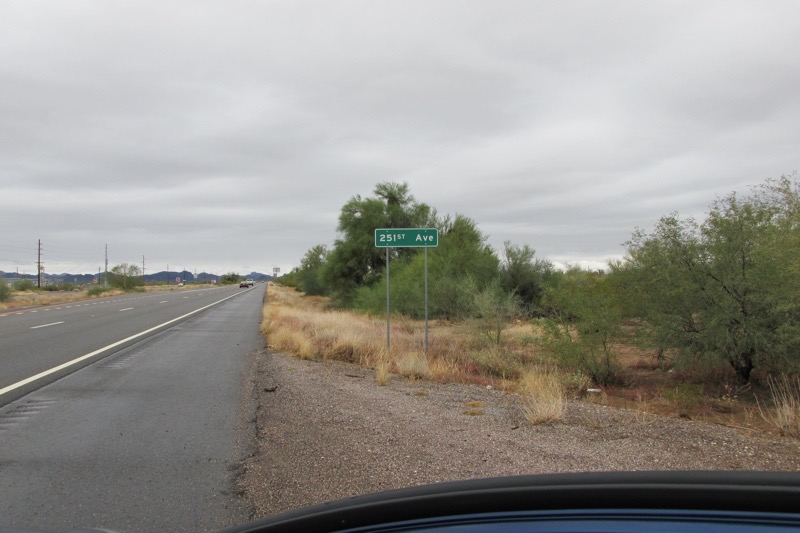
Here’s a nice shot of the urban extension of Phoeniz, Arizona. As you can see, their street layout system is, shall we say, optimistic.
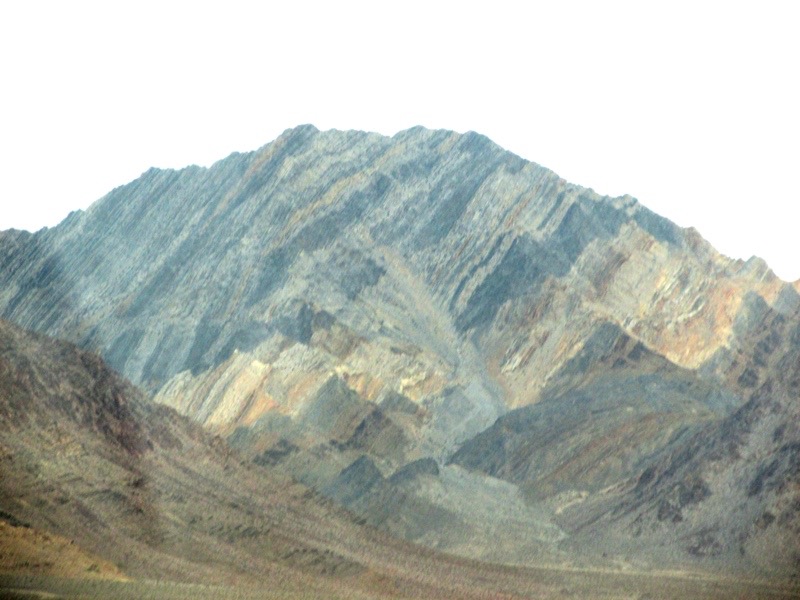
Nevada is truly a geologist’s dream. There’s no vegetation to hide the rocks, so you can see all the structure bright and clear.
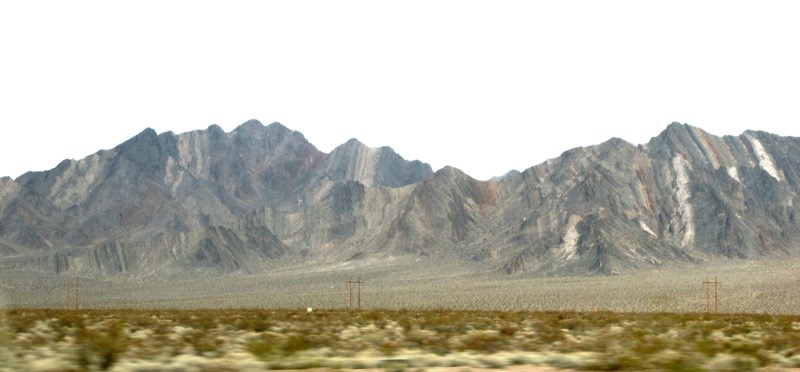
Contemplating these vertical layers, I realized that they could not represent large-scale structures; if they were, they’d extend 20 miles down, which isn’t plausible. This led me to realize that the tilting of strata is dominated by weak spots in the overburden that are punched through by uplifting forces. In other words, the uplift is not narrow, it’s broad, but the breakage is narrow, which is why we can have such steeply inclined strata.

Las Vegas did not impress me. Las Vegas has the same design aesthetic as a video game. It’s Disneyland, only X-rated; it’s Southern California extended to other means. But I wonder: what confluence of forces caused this cultural anomaly? Was it important that the place is in the middle of an otherwise inhospitable desert with nothing of economic value? What role did Hoover Dam play in the rise of Las Vegas?
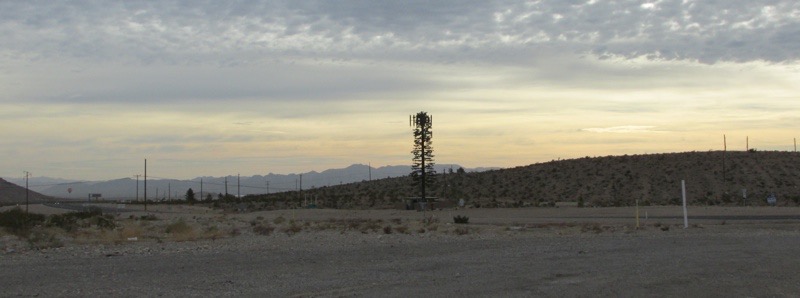
A cell tower cleverly camouflaged as a tree. Unfortunately, there are no real trees for ten miles in any direction.
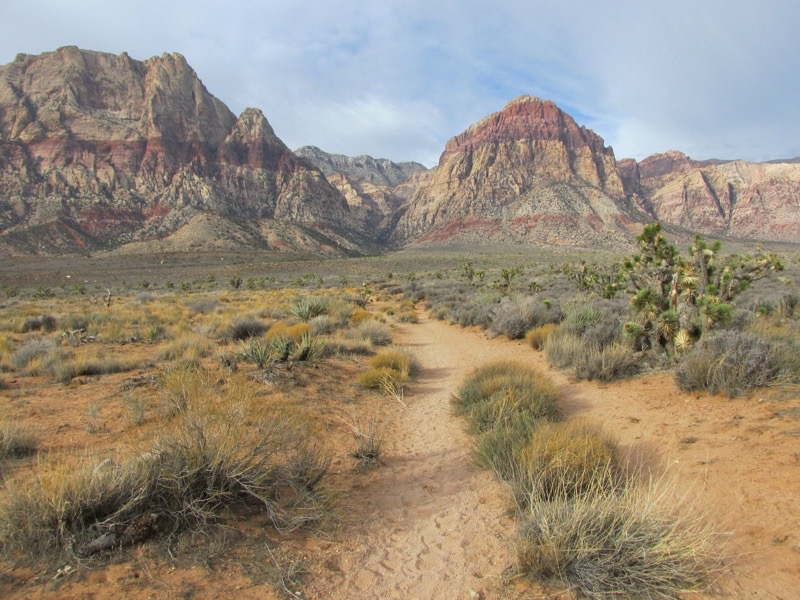
On a whim, I decided to hike to this canyon. The distance is about two miles.
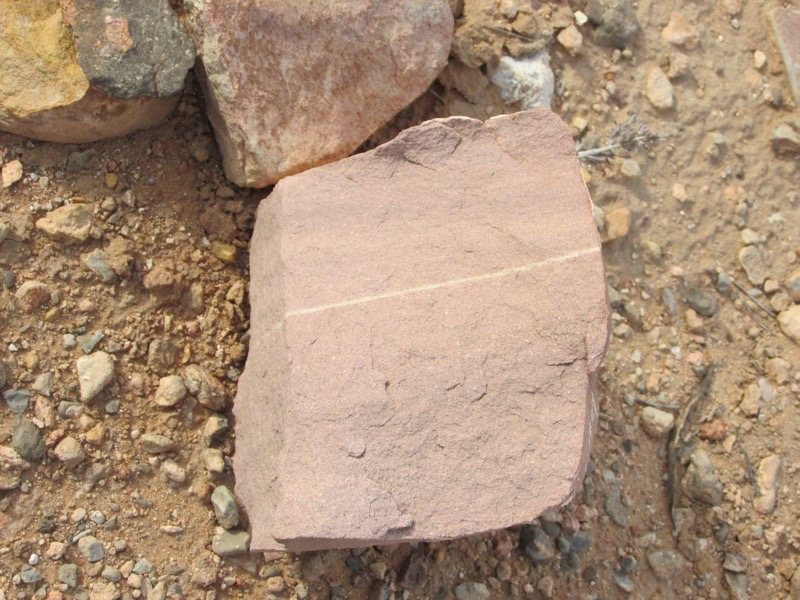
Why in the world would this uniformly pink sandstone have a single band of white? What produced that band?
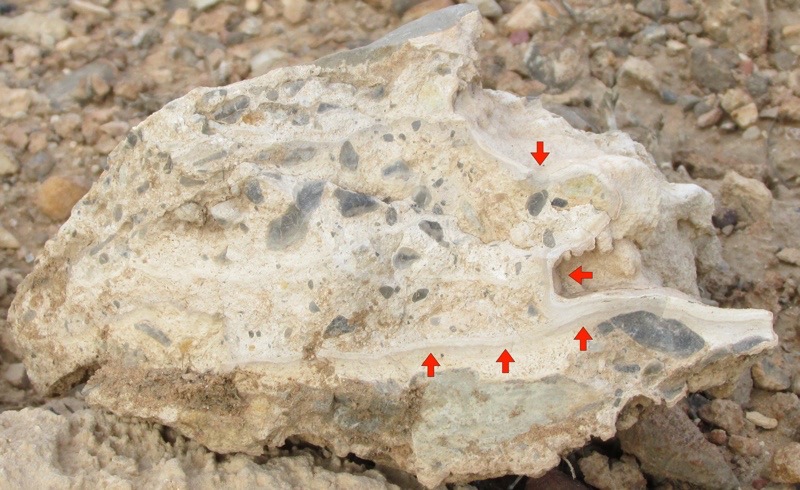
At first glance, this looks like a normal everyday conglomerate: a bunch of river gravel caught up in sediment that was later packed hard into a rock. But what’s the surrounding white layer that enveloped the entire rock?
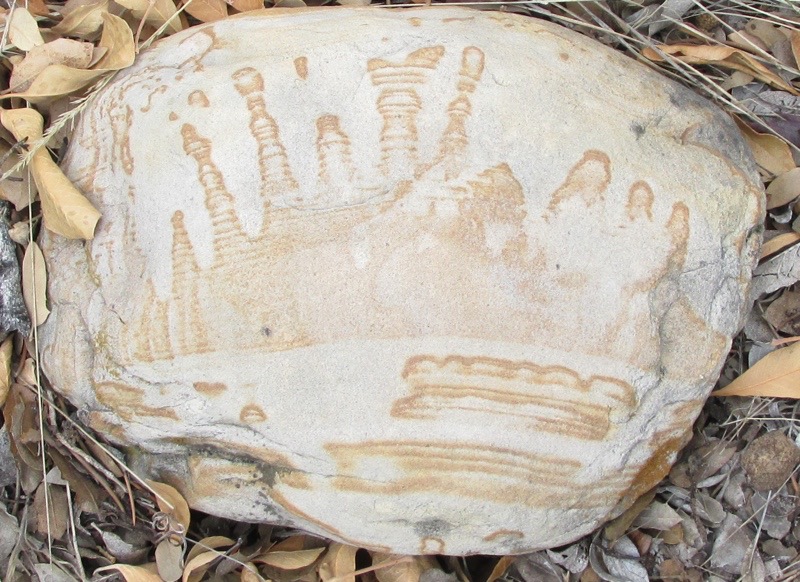
This is really weird: white sandstone with reddish stains. I cannot imagine how this came about. I’ll have to bug some geologists for an explanation.
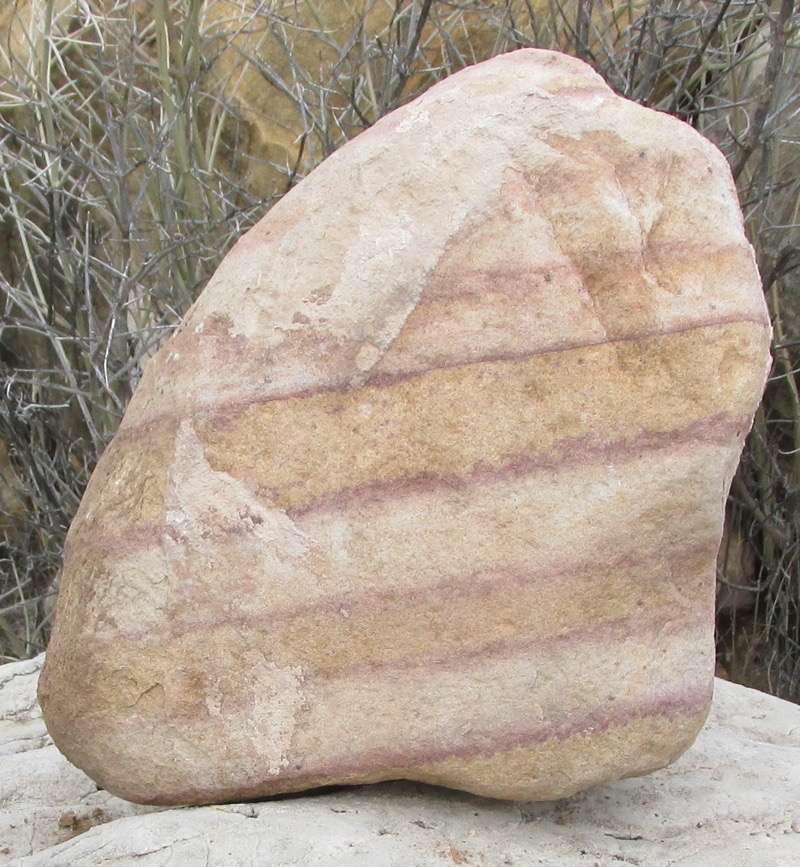
Here’s another weird piece of sandstone. We seem to have alternated in regular sequence between long “white sand” periods, very short “red sand” periods, and long “orange sand” periods. Do you think that maybe those dinosaurs were just trying to mess with our heads?
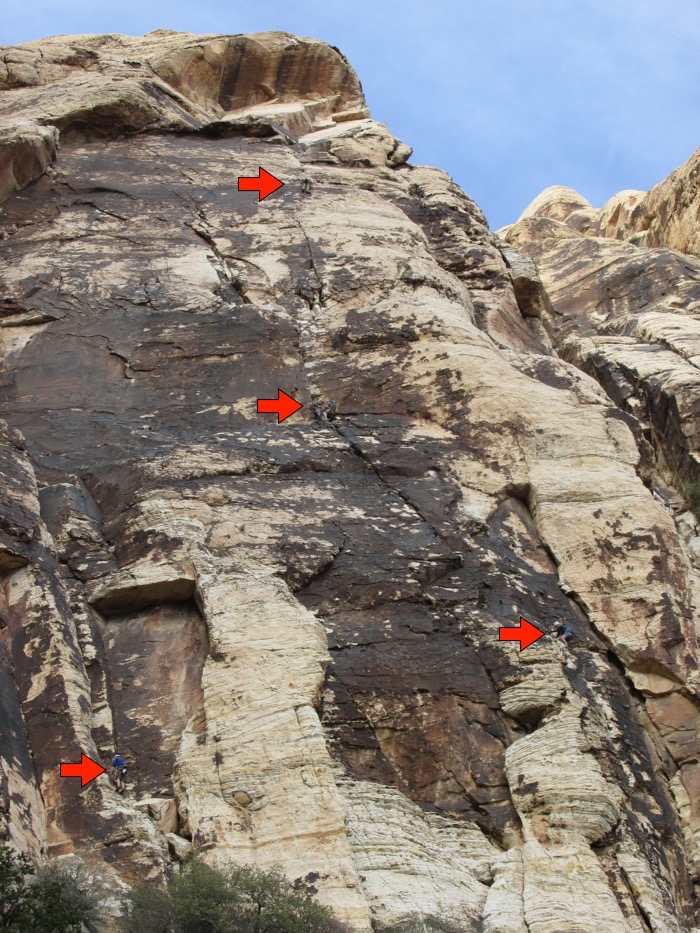
Five Rock Climbers going up one of the cliffs.
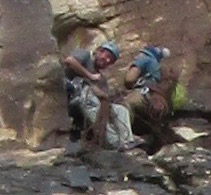
A closeup of the two climbers in the middle.

A 400º panorama from deep inside the canyon. Note that red sandstone on each end is the same formation. The entrance to the canyon is the rightward opening.
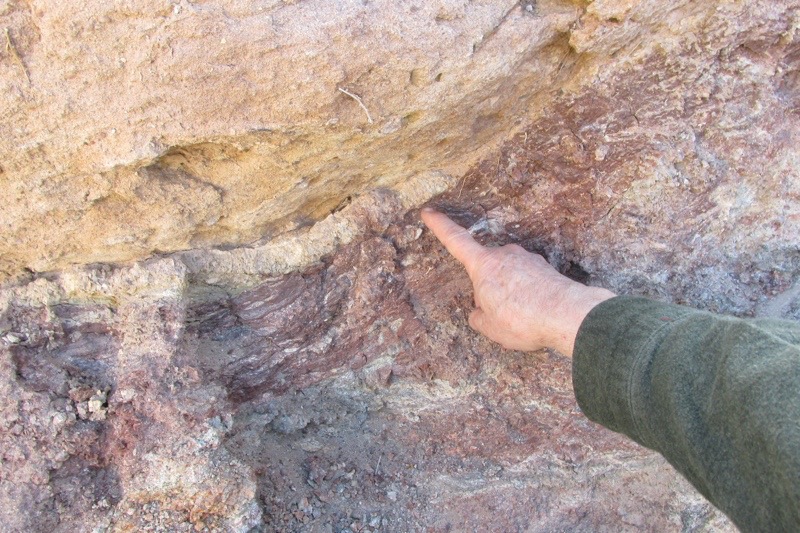
The Great Nonuniformity on Frenchman Mountain east of Las Vegas. The upper rock is sandstone, 500 million years old; the lower red rock is pegmatite, about 1.8 billion years old. The rock that should be between them got eroded away before the sandstone was laid down.
What happens in Vegas, stays in Vegas. Presumably they use rusty scissors to perform the operation.
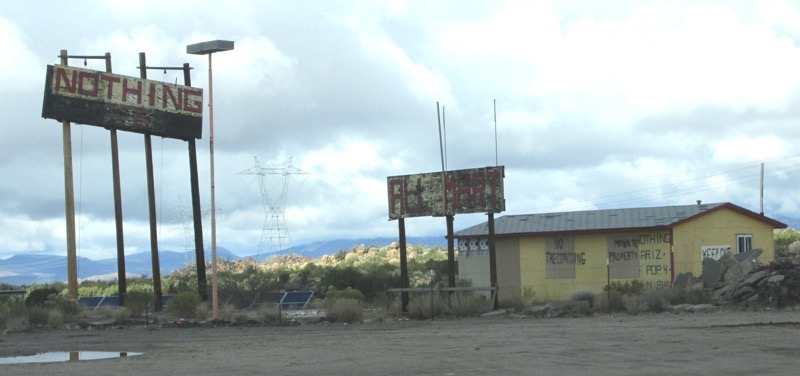
The aptly-named metropolis of Nothing, Arizona. Population 4. The Nothing Symphony’s epic rendition of Beethoven’s Ninth Symphony is world-renowned for its stentorian achievement.
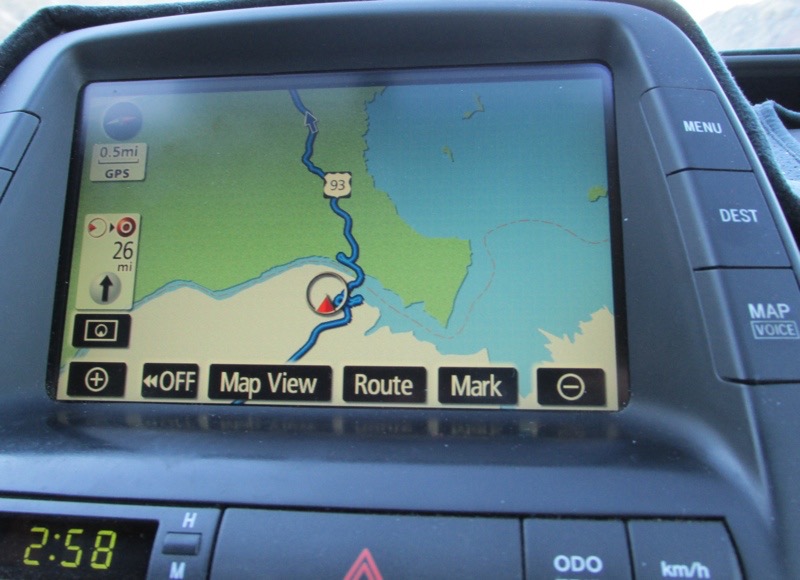
Our Prius has a built-in map guidance system that is a few years out of date. Unaware of the existence of the new bridge at the Hoover Dam, which bypasses the winding road to and over the dam, the map-guidance voice, usually soft and gentle, became quite agitated when it realized that we were going over the edge of Black Canyon, screaming “We’re all going to die!!!"
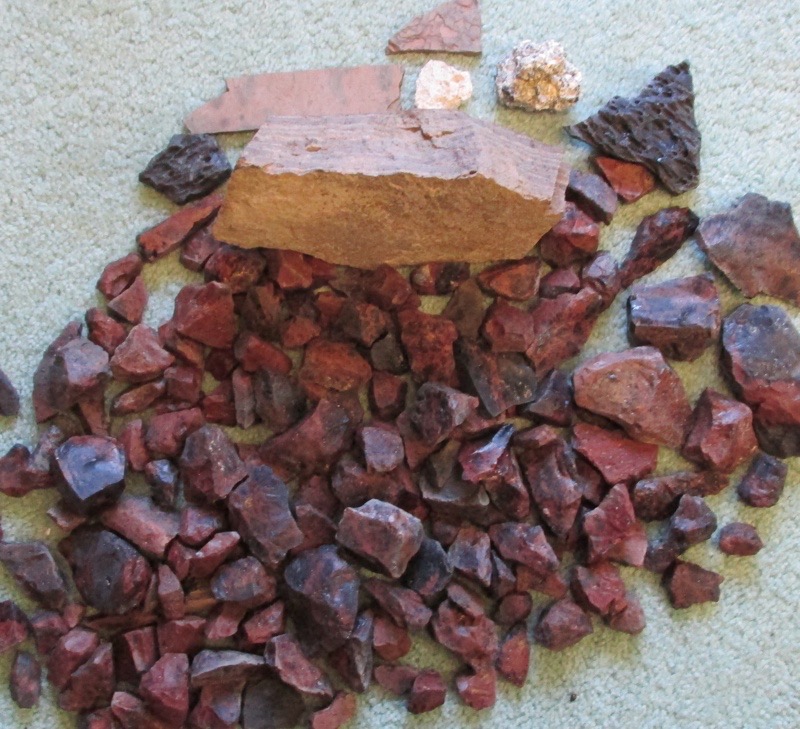
I got all these rocks from a single location. It’s mostly mahogany obsidian, but there’s also some black obsidian here as well; note the two pieces at the top that have lots of bubbles in them. Note also the plainly sedimentary rock taken from the same location. The topmost five pieces that aren’t obsidian are some flat pieces of a sedimentary rock, an evaporite, and a conglomerate. All from a single mountain side!
If you'd like to go there, use Google Maps to find location +37.64079º -118.9007º. That's a small parking area. Go there and climb the mountain above you. The higher you go, the larger and nicer the bits of mahogany obsidian you'll find. There's also tons of great pieces of regular obsidian. Be warned, however, that it's a stiff climb: the mountain is basically ash, so for every step up you take, you slide half a step down. I got maybe ten pounds of mahogany obsidian. I ALSO found some pumice, a piece of breccia (!) and some really odd layered rocks that look very sedimentary to me.
While passing through Mustang, Nevada, I came up with a great idea for a T-shirt: “I struck out at Mustang Ranch.”
They have an interesting residential style in Arizona: people set up mobile homes -- rather shabby ones -- in utterly remote locations, devoid of anything of note other than their remoteness from anything of note. They do cluster together, but I suspect they do so only because of availability of power lines. These communities of recluses are, apparently, the result of people seeking cheap land of their own, and I'm sure that the God-forsaken 10 acre parcels they purchase are indeed inexpensive. But I wonder, how much money would you demand to agree to live in such a horrid place? More than they save?
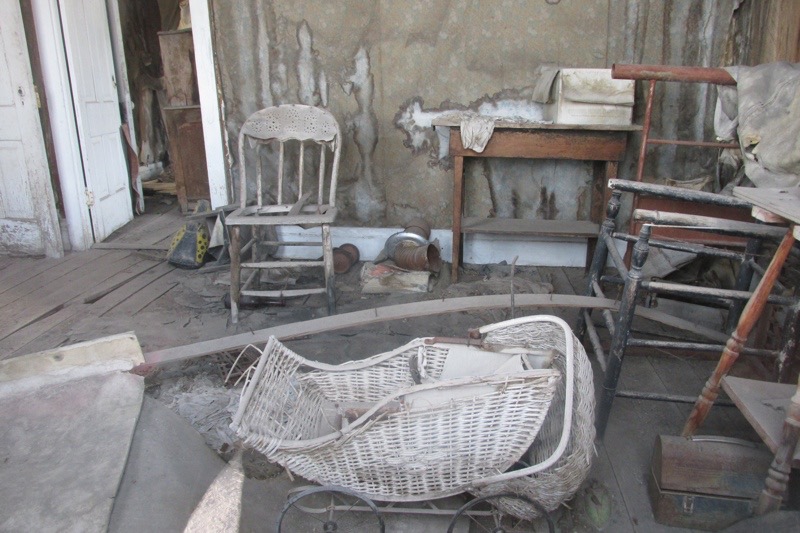
The view inside a house in the ghost town of Bodie. It was abandoned around 1930. Note decrepit baby carriage and black-and-yellow toy in the doorway.
A steam engine for lifting heavy loads out of the mine. The steam cylinder is in the lower right, driving the connecting rod in the bottom center, which turns the flywheel at bottom just left of center. This turns the axle with the small gear, which turns the huge gear, which raises the steel-web cables on either side of the big gear. This is heavy iron. Funny thing: this engine generates a few hundred horsepower, about what a modern large car engine can generate.
